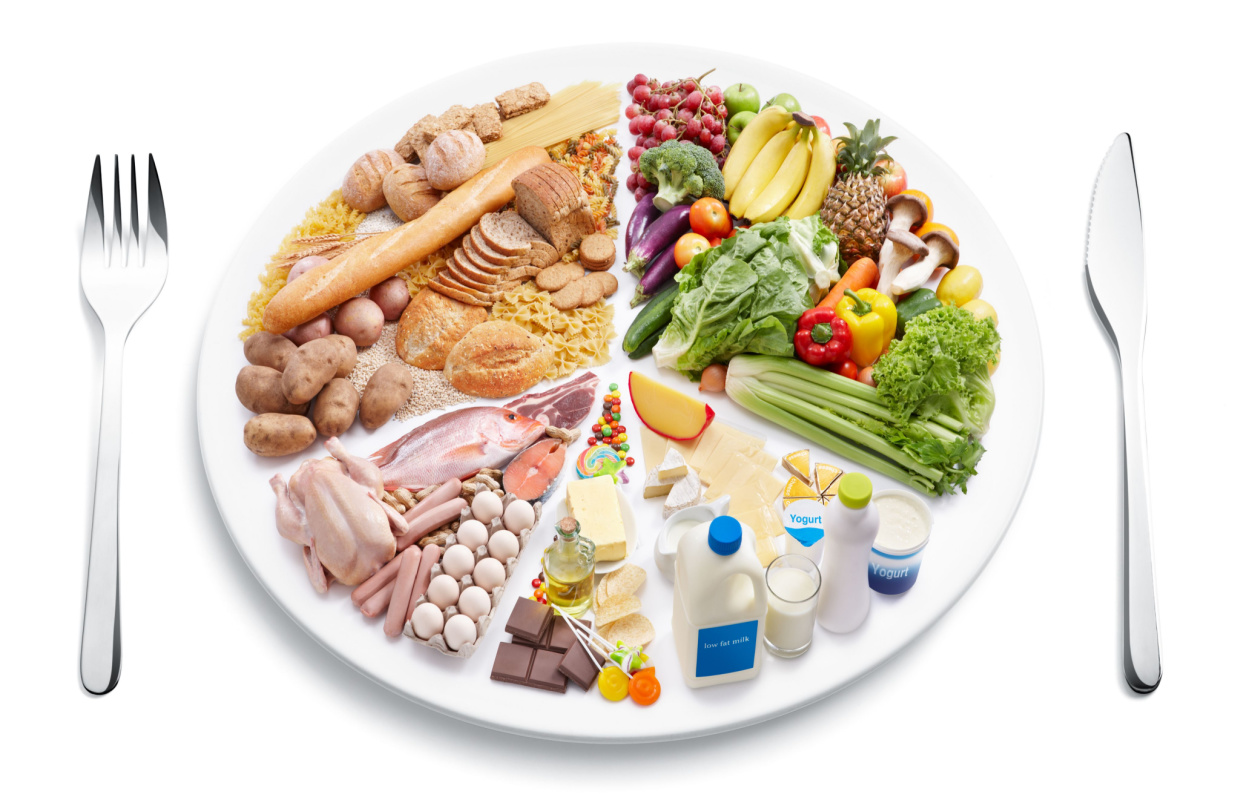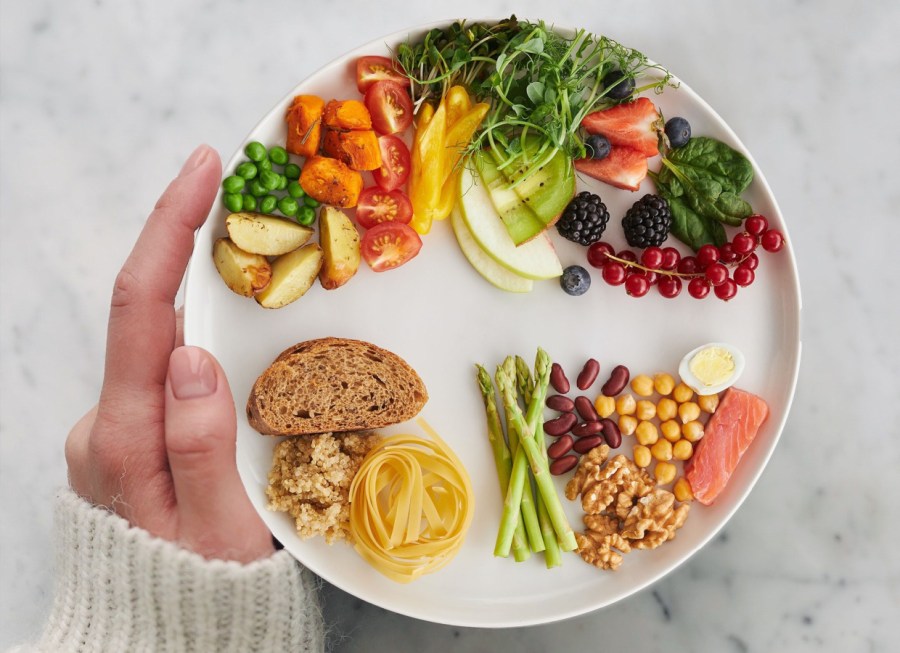The Eatwell Plate outlines the key nutrients you need to include in your diet – and the ideal quantities of each – to ensure you’re leading a healthy lifestyle. Follow these simple guidelines to ensure your diet contains all the nutrients your body needs…
Here’s an easy way to make sure you achieve a balanced diet and the optimum proportions for each food group. The Food Standards Agency (FSA) has developed the Eatwell Plate to explain the foods that make up a balanced diet. It is split into five key food groups and is a useful tool for planning your meals and managing portion sizes.
Looking to fuel your workouts? Discover our guide to pre-workout nutrition for women
What is the Eatwell Plate?
The Eatwell Plate is a visual tool used to display the quantities of different nutrients you should include in your diet. If you’re struggling to find balance when it comes to food, it can be a super handy tool to help you plan out your meals and portion sizes.

5 key food groups of the Eatwell Plate
1. Fruit and vegetables
One third of your daily food intake (or your plate at mealtimes) should consist of fruit and vegetables. Aim to eat at least five portions (three vegetables and two pieces of fruit) each day. As well as fresh fruit and veg, frozen, canned, dried or juiced produce count, too.
2. Starchy carbohydrates
Bread, pasta, potatoes, rice and other starchy foods should make up a third of your plate. These carbohydrates are a great source of energy, and they also contain essential micronutrients such as calcium, iron and B vitamins, plus fibre to keep your digestive system working smoothly. By opting for wholegrain versions, you will further increase the vitamins and minerals in your diet.
3. Dairy products
Eat two to three portions of milk or dairy products each day. One fifth of the Eatwell Plate is dedicated to this group, as these foods are a great source of protein, calcium, vitamin A and B12. They can be high in fat, so keep your macronutrients in balance by choosing low-fat versions.
Following a plant-based diet? Swap dairy products for other calcium-rich foods, like fortified oat or soya milk and other dairy alternatives. Be sure to look for lower fat and lower sugar options, as many dairy alternatives can be surprisingly unhealthy!
4. Fat and sugar
With a low-nutritional profile, fat and sugar should make up five per cent of your plate.
5. Meat, fish, eggs and beans
Aim to consume two to three portions of low-fat protein each day. This includes lean meat, fish, beans and other non-dairy sources of protein, such as eggs.
Glycaemic Index & Glycaemic Load
The glycaemic index (GI) is the classification of food based on how quickly it is broken down and absorbed into the bloodstream. It’s a good indicator of how quickly your food will convert to sugar after eating. Foods are ranked against pure glucose, which is the most easily absorbed form of sugar, and rated 100.
If a food, such as wholewheat bread and green vegetables, is rated less than 55 it’s deemed low GI and will be slowly absorbed. GI does not take into account the amount of carbohydrate in a food, however. So glycaemic load (GL) is a better indicator of how a serving of food will affect your blood sugar. Many foods, such as potatoes, carrots and pineapple, are high GI but low GL and should be consumed because they are loaded with nutrients.
Get to know your portion sizes
Do you know your quantities? The following servings are equivalent to 1 portion. Use them as a mealtime guide.
- 1 slice of bread – 1/2 baked potato – 2 tablespoons cooked rice – 3 tablespoons cooked pasta – 3 tablespoons breakfast cereal
- 75g lean meat – 75g oily fish – 150g white fish – 2 medium eggs – 4 tablespoons pulses – 2 tablespoons nuts
- 200ml milk – 150g yoghurt – 30g hard cheese – 2 tablespoons cottage cheese
- 2 slices pineapple – 2 small kiwis – large handful berries – 150ml fresh juice or smoothie
- 3 tablespoons cooked vegetables
- 1 tablespoon olive oil








